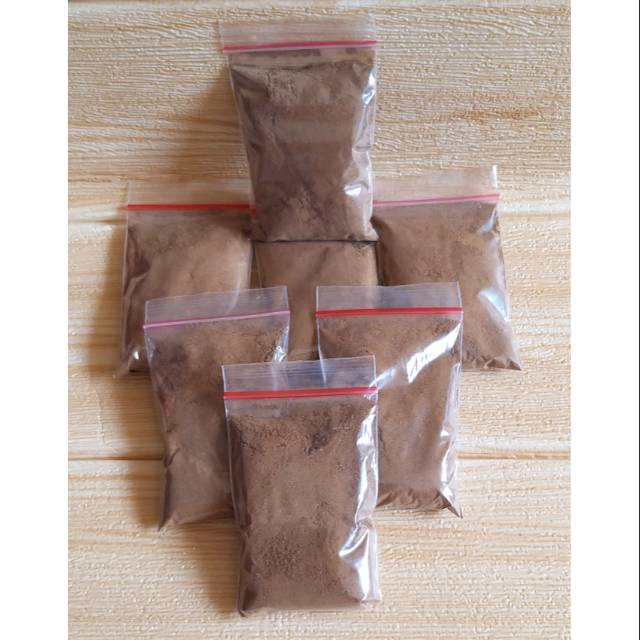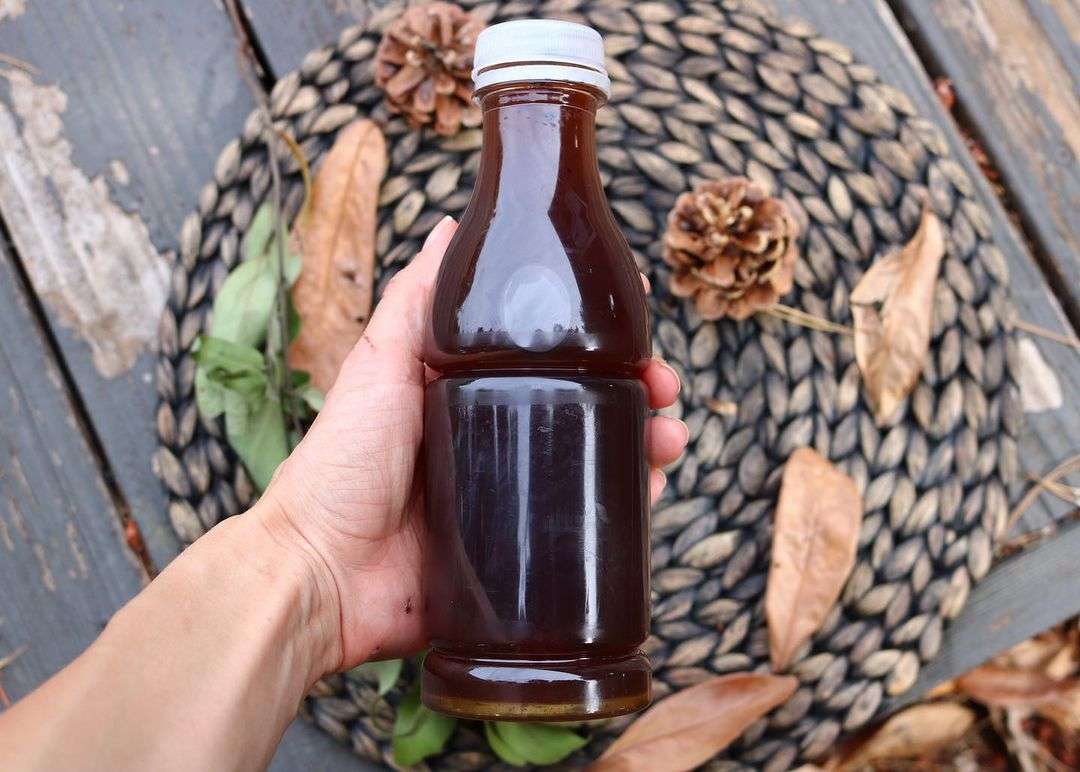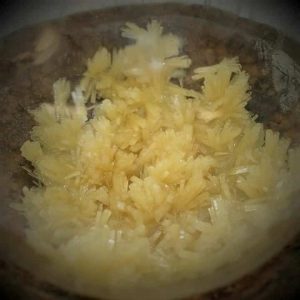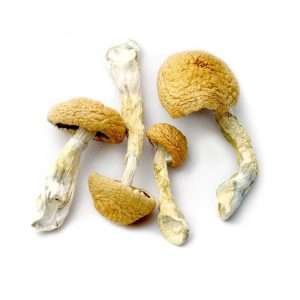Looking for high-quality Ayahuasca tea? Psyttraxx is your trusted source for authentic and safe Ayahuasca tea, crafted with care and expertise. Psyttraxx is your trusted online store for authentic Ayahuasca tea, offering premium products designed for spiritual exploration, emotional healing, and personal insight. Here’s a guide to buying Ayahuasca tea and why Psyttraxx is the best choice.
Why Choose Ayahuasca Tea?
Ayahuasca tea is renowned for its transformative effects on:
- Spiritual Growth: Deepens your connection with the self and the universe.
- Emotional Healing: Helps release past traumas and emotional blockages.
- Mental Clarity: Offers insights and new perspectives on life’s challenges.
Where to Buy Ayahuasca Tea
With Psyttraxx, you can confidently buy Ayahuasca tea online, whether for personal exploration, spiritual growth, or research purposes. Explore the transformative journey of Ayahuasca with our premium products.
GET PURE AND NATURAL AYAHUASCA TEA ONLINE
By now, you’ve probably at least heard of ayahuasca — the powerful psychedelic brew from the Amazon.The bitter-tasting brew turns two non-psychoactive plants into one of the strongest hallucinogenic compounds on earth. A single cup of ayahuasca tea can transport you into a vivid dream-like state that can last up to 6 hours. Ayahuasca Tea
Biohackers, Silicon Valley executives, and spiritual experience-seekers are traveling to the far reaches of the Amazon to try this entheogenic brew for themselves.
Is ayahuasca safe? What are its alleged benefits?
What is Ayahuasca?
Ayahuasca is an entheogenic preparation of two South American plants — the ayahuasca vine and the Psychotria viridis shrub (or substitute).
Drinking ayahuasca leads to intense visual and auditory hallucinations, introspection, and spiritual experiences. It’s consumed in a group setting and led by a special type of shaman called ayahuasquero.
Most people who have used ayahuasca claim it had a profound positive impact on their life — even if the experience itself was scary or uncomfortable. Ayahuasca forces you to face fears or confront internal struggles.
Many people who visit ayahuasca retreat centers seek spiritual growth, self-development, and treatment for mental health conditions like depression, existential anxiety, or addiction. Patients who recently survived terminal diagnoses or experienced life-threatening events often seek out ayahuasca to answer tough questions around the fear of death.
Ayahuasca Tea for Sale
Psyttraxx provides Ayahuasca tea for sale globally, including the USA, UK, Canada, Australia, and South Africa. Each product is carefully sourced and crafted to maintain authenticity and effectiveness.
Ayahuasca changes your perspective of the world, helps you identify flaws in your character, and breaks toxic habits.
The most common reasons people use ayahuasca:
- Traditional ceremony or sacrament
- Seeking spiritual experiences
- Self-growth & development
- Treating mental health disorders & addictions
- Facing the fear of death or past traumas
How Does Ayahuasca FUNCTION?
Ayahuasca requires two components to work — a source of DMT (the psychoactive ingredient in the mix) and an MAO inhibitor to protect the DMT from being broken down too quickly.
There are a few recipes for ayahuasca, depending on what plants are available locally. The most common is the ayahuasca vine and Psychotria viridis.
1. N,N-DMT (Psychoactive Component)
The active ingredient in ayahuasca is DMT (N,N-dimethyltryptamine) — which is one of the strongest psychoactive compounds on earth. DMT is produced in small concentrations in the human brain, where it’s thought to be responsible for producing the dream states we experience while we sleep.
DMT works by activating the serotonin receptors. It targets several different types of serotonin receptors, each one offering a different effect on the psyche, mood, and mental health. The main target responsible for producing hallucinations and changes in perception of time and space are the 5-HT2A and 5-HT2C receptors.
Ayahuasca Tea Buy
Buying Ayahuasca tea at Psyttraxx guarantees authenticity and a safe shopping experience. Perfect for personal rituals, healing journeys, or research purposes
There are a few different sources of DMT that can be used in the ayahuasca brew. The most common is Psychotria viridis (chacruna) — which is a member of the coffee family.
None of these plants have psychoactive effects when taken on their own. They need the second ingredient (MAO inhibitor) in order to produce any psychoactivity whatsoever.
DMT sources used to make ayahuasca include:
- Psychotria viridis (chacruna)
- Psychotria carthagenensis (Amyruca)
- Mimosa tenuiflora
- Mimosa hostilis
- Mimosa pudica
2. Harmala Alkaloids (MAO Inhibitor)
The second ingredient is the ayahuasca vine (Banisteriopsis caapi) — which is a large, woody vine found growing deep in the Amazon jungle. This component contains a group of compounds called harmala alkaloids.
Harmala alkaloids have a variety of medicinal uses on their own by inhibiting an enzyme known as monoamine oxidase — which is an enzyme used to break down neurotransmitters like dopamine, serotonin, and norepinephrine.
This component is important for ayahuasca to work because it prevents the breakdown of DMT.
Normally, monoamine oxidase in the liver quickly breaks down DMT — blocking the psychoactive effects.
The ayahuasca vine blocks MAO in the liver and allows concentrations of DMT in the blood to increase — leading to psychoactive side effects.
3. Other Additives
The core recipe of ayahuasca includes just two plants — however, some people will add other plants to the brew to enhance its effects. Some of these additives are dangerous and should never be consumed for any reason — such as datura or Brugmansia.
Here are some of the most common additives used in traditional ayahuasca brews:
- Brugmansia insignis — a close relative of datura found in the Amazon
- Brugmansia stramonium (Datura) — a psychoactive plant species with harmful side-effects
- Calycophyllum spruceanum (Capirona) — added for protection in traditional ayahuasca brews
- Cedrelinga catenaeformis (Air Tree) — increases the purgative effects of ayahuasca
- Chullachaki caspi — adds a spiritual healing component to the brew
- Couroupita guianensis (Ayahuma) — traditionally used to heal “soul loss” due to trauma
- Ilex guayusa — a relative of yerba maté containing caffeine
- Justicia pectoralis — used as a general tonic herb
- Lupuna blanca — one of the largest trees in the Amazon, added for strength and protection
- Nicotiana rustica (Mapacho) — a type of tobacco high in nicotine
- Punga amarilla (Yellow Punga) — adds a protective element to the brew
- Remo caspi (Oar Tree) — added to “remove dark energy” in traditional applications of ayahuasca
WHAT ARE THE BENEFITS OF AYAHUASCA ?
Ayahuasca should not be taken lightly — it’s a powerful entheogenic substance that produces intense, often terrifying hallucinations and experiences. The vulnerable mental state ayahuasca creates can lead to psychological trauma if you’re not careful. A focus on set and setting is especially important with this entheogen.
We’ll cover the risks of using ayahuasca in more detail later.
For now, let’s cover the alleged health benefits of ayahuasca and explore what the medical research says about this powerful plant medicine.
In summary, the health benefits of ayahuasca include:
- Treatment for addiction — including alcohol, illicit drugs, and tobacco
- Treatment for chronic depression
- Treatment for existential anxiety & other anxiety disorders
- May offer protective or restorative effects on brain health
- Useful as a tool for self-growth and exploration of consciousness
ADDICTION AND AYAHUASCA
One of the most common motivations for using ayahuasca is for treating drug addiction. There are countless user reports and case studies involving ayahuasca to cut cravings, reduce relapse rates, and improve mental health.
Despite how common this application is and the sheer volume of anecdotal reports for this use, there are surprisingly few scientific studies to back this up. One of the main reasons for this is likely the fact that ayahuasca is illegal in most parts of the world. It’s also difficult to quantify the results because every batch of ayahuasca is different. There are many underpinning factors that go into this effect.
Ayahuasca Tea Legal in the US
The legality of Ayahuasca tea varies. Psyttraxx offers expert guidance and ensures discreet delivery to locations where Ayahuasca is legally permissible.
There are several theories for how ayahuasca can manage addiction so effectively [2] — all of which have been difficult to quantify. There’s a lot going on here.
The main theory for how ayahuasca is thought to work for addiction involves the interaction of the active ingredient — DMT — in the default mode network (DMN). The DMN is a large-scale brain network responsible for managing our sense of “self” vs. “other,” as well as self-esteem and self-worth. It’s involved with the rumination of thoughts in the brain while we’re in a rested state (the “voice” in your head).
Hyperactivity of the DMN, as shown on brain scans, is correlated with addictive tendencies as well as other mental health conditions such as depression and anxiety.
AYAHUASCA TEA AND DEPRESSION
One of the only clinical studies we have on the effects of ayahuasca for addiction was funded by MAPS Canada. Researchers guiding this study sought to understand the impact of ayahuasca as a treatment for addiction and self-harm thought patterns [1].
The treatment involved a 4-day retreat in Canada. Participants were administered ayahuasca on three separate evenings. After the study, participants were followed up via telephone a total of seven times — the last one at the 6-month mark.
Psychedelic Tea Ayahuasca
As a powerful psychedelic brew, Ayahuasca tea facilitates transformative experiences. Psyttraxx provides support for safe and responsible use.
The study concluded that the ayahuasca treatment resulted in a significant improvement in mental health parameters, including “mindfulness, empowerment, hopefulness, and quality of life outlook and meaning.”
The most significant improvement was for cocaine addiction. In this particular study, users treated for marijuana or opiate addiction showed only minor improvements when researchers assessed the frequency of use at the final 6-month follow-up period.
CAN AYAHUASCA TEA HELPS WITH DEPRESSION ?
There’s been a mounting pile of evidence supporting the antidepressant effects of psychedelics in the treatment of depression. LSD (acid), psilocybin (from magic mushrooms), and DMT have all been shown to improve depressive symptoms in patients after a single psychoactive dose.
In 2019, a double-blind, placebo-controlled clinical trial explored the effects of ayahuasca on 29 patients with treatment-resistant depression. The study noted a dramatic reduction in depression scores in the treatment group comparable in terms of benefit to earlier studies the group conducted on using ketamine for treatment-resistant depression.
Ayahuasca Tea Purchase Options
Psyttraxx offers various options, including Ayahuasca tea kits and dried components for personalized preparation.
Other studies have shown similar benefits — reporting an 82% reduction in depressive scores after a single dose of ayahuasca. This study showed sustained benefits at the 21-day follow-up survey.
The benefits of ayahuasca for depression is likely the result of a few different mechanisms. The active ingredient in the brew, DMT has been shown to have the ability to “reset” the default mode network. Hyperactivity in this cognitive process has been correlated with the formation of chronic mental health conditions, including depression.
Buy Ayahuasca Tea Online
With Psyttraxx, you can easily and securely buy Ayahuasca tea online. Our intuitive platform ensures a seamless experience for all customers.
Other ingredients in the brew, such as the harmala alkaloids, have also been shown to offer independent antidepressant effects. Harmala alkaloids are potent MAO inhibitors. This is a common target for pharmaceutical antidepressants such as Marplan and Nardil.
ANXIETY DISORDER AND AYAHUASCA
Ayahuasca is thought to improve symptoms of post-traumatic stress syndrome through the effects of the SiIGMAR1 gene.
This interaction is very complex, involving epigenetic changes and reconsolidation of past traumatic memories. Researchers are still seeking to understand how this interaction works as a form of treatment for mental health disorders.
CAN AYAHUASCA HELP WITH THE BRAIN HEALTH ?
Ayahuasca was shown to stimulate neuroprotective mechanisms such as BDNF (brain-derived neurotrophic factor). The active ingredient for this effect are the harmala alkaloids from the banisteriopsis plant.
The increase in BDNF after taking ayahuasca was also shown to improve memory and learning in several animal studies. This study looked at the long-term use of ayahuasca — rather than single-dose treatment. This is one of the potential benefits that come from microdosing ayahuasca.
Where to Buy Ayahuasca Tea
Searching for reliable sources? Psyttraxx is the best place to buy Ayahuasca tea online, offering discreet, global delivery and expert guidance.
Other studies have shown protective benefits from the harmine alkaloids through the ability to stimulate the growth of neural progenitor cells. An animal study showed a 70% increase in progenitor cell growth [9]. Neural progenitor cells significantly impact brain health through their ability to differentiate into a variety of important neuronal and glial cells.
IS AYAHUASCA SAFE ?
While ayahuasca is generally considered safe — there are some potential risks to be aware of before you consider giving it a try yourself.
One of the most dangerous parts about ayahuasca isn’t the brew itself. This concoction is best used in the presence of a shaman. To get this treatment, you’ll need to travel to a retreat center in Peru or Brazil.
These retreat centers are usually located in the middle of nowhere. You’d be lucky to have any cell service at all out here, and there’s a lot of poverty and desperation. It’s not uncommon to find yourself in danger when visiting these parts of the world, especially if you don’t know what you’re getting into.
Ayahuasca Tea Kit
Psyttraxx offers complete Ayahuasca tea kits, including all essential components for a traditional brew. Perfect for those exploring its transformative properties.
Secondly, fraud shamans are also common. Sometimes these shamans even add toxic psychoactive compounds like Brugmansia to the mix to “enhance the visions”. This plant is not safe to use and can lead to psychosis, traumatic experience, or death.
SIDE EFFECTS OF AYAHUASCA (TEA)
Virtually everybody who uses ayahuasca experiences bouts of vomiting during the session. This is not only an expected side effect; it’s also considered a key part of the experience itself.
The vomiting is referred to as “purging” as it’s thought to be a purging of negative thoughts and energy during the ceremony. During the session, the vomiting feels therapeutic, and few people consider this aspect a “side effect” after the ceremony is complete.
Vomiting usually begins around an hour or an hour and a half and continues for 1 – 2 hours on and off.
Other “side effects” revolve around the experience itself, which can be both terrifying and painful. Anxiety, panic, and fear are all common experiences. It’s important to learn how to “let go” and accept the path ayahuasca takes you to avoid staying in a negative space for very long. The more you resist the effects of ayahuasca, the stronger these side effects become.
The side effects of ayahuasca include:
Tradition & History of Ayahuasca
Ayahuasca has been used for at least a thousand years by various cultures living in the Amazon basin. An ethnobotanist named Richard Evans Schultes was the first person to document its use outside local indigenous communities back in the mid-1950s.
In his early reports about the origins of the divine concoction, the indigenous Peruvians he visited claimed instructions for the brew were given to them from the rainforest and plant spirits contained within.
The name ayahuasca is the Hispanic spelling of the brew, but the original work is Quechuan. Aya- means “spirit” or “soul,” and huasca means “rope” or “vine.” The word essentially translates to “vine of the soul.” But others might argue the translation is closer to “rope of death.”
Within various indigenous cultures scattered across the Amazon, the use of the brew remains fairly consistent. A trained shaman, called ayahuasquero or curandero, administers the brew to members of his community who are sick or need guidance. It’s given to women as they’re giving birth and to the older people as they lie on their deathbed.
In some cultures, the shaman would take ayahuasca to connect with the forest to find food or receive information and guidance for the rest of the community.
Today, the tradition of ayahuasca lives on in the rainforest, as well as satellite groups living in the United States and Europe. Government regulators have granted two groups — the União do Vegetal and Santo Daime (both from Brazil) access to use the brew for religious purposes. Both of these groups take a Christian spin on how ayahuasca is use.
Ayahuasca Retreat Centers
The most common way of using ayahuasca is at a retreat center. Taking ayahuasca shouldn’t be done over the course of a single afternoon like other psychedelics. It’s exceptionally powerful and requires some preparation, both mentally and physically.
The majority of retreat centers can be found in Peru, Ecuador, or Brazil, where the brew originates. These regions have access to the herbs, the shamans, and the rainforest — which is considered a major component of the spiritual aspect of drinking ayahuasca.
You can also find retreat centers in North America, Europe, and Australia. From a traditional perspective, these should be avoided, especially if the intention for using ayahuasca is for spiritual purposes. It’s important that ayahuasca is consumed in the rainforest.
However, if the spiritual side isn’t important to you, the chemical components of ayahuasca are the same whether you’re in the jungle or in Europe.
FAQS: About Ayahuasca
Ayahuasca is a big topic, and there are a lot of facets to consider. While this article covers many aspects of this traditional brew, there are a lot of questions we didn’t quite cover. Here are some of the most common questions we’ve received after publishing this guide.
1. Is Ayahuasca a Stimulant or a Sedative?
Ayahuasca is neither stimulant nor sedative — but it will exaggerate your current feeling. In a dark, quiet setting, ayahuasca can feel very relaxing. However, in a loud or bright room, or while agitated or anxious, ayahuasca can charge these effects and become more stimulating.
2. What Are Some of the Common Names For Ayahuasca?
Ayahuasca has well over 42 names. Just a few examples include natem (Ecuador), shori (Peru), yagé, uni, nixi pãe, caapi, and camarampi.
3. Why Does Ayahuasca Make People Vomit? Can it be Prevented?
The main ingredient that causes vomiting is the ayahuasca vine. The active harmine alkaloids stimulate the stomach and digestive tract — causing them to contract.
There is no good way to avoid vomiting from ayahuasca, aside from taking a much smaller dose.
This aspect of the ritual can seem undesirable, but it actually provides a great deal of therapeutic value in the moment. Trust me.
4. What’s the Best Ayahuasca Retreat Center?
There are a lot of retreats, and we’ve only experienced a small percentage of them, so it’s hard to point you to the “best” retreat there is.
However, my personal favorite is the Hummingbird Healing Center in Iquitos, Peru.
5. What Are Machine Elves?
DMT machine elves are a common experience among people who drink ayahuasca or use other forms of DMT.
There are many theories about what these creatures are, or if they even exist at all — the likely truth is that we’ll never know for sure.
6. What Type of DMT is in Ayahuasca?
There are several different types of DMT. In ayahuasca, the primary form is N,N,DMT, but it’s possible for some brews to contain 5-MeO-DMT as well, depending on what species of plants are being used.
Other forms of DMT not found in ayahuasca includes 4-OH-DMT (psilocin from magic mushrooms), 4-AcO-DMT (synthetic prodrug of psilocin), and 5-Bromo-DMT (SpongeBob DMT).
What Does the Future Look Like For Ayahuasca?
Interest in ayahuasca has been growing steadily over the past decade and shows no signs of slowing down.
There’s a whole industry these days around psychotourism — which involves traveling for the sake of taking psychedelic compounds for self-growth and spiritual development.
As public opinion and regulations continue to evolve around psychedelics, it’s very likely we’ll see an increase in the number of ayahuasca retreat centers in places like North America, Australia, and Europe as well.






Reviews
There are no reviews yet.